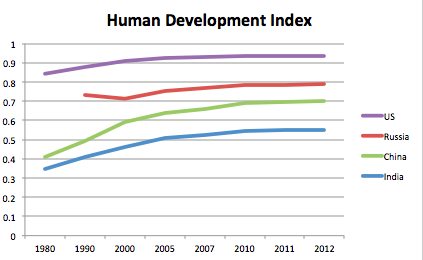- Facebook304
- Total 304
Today’s New York Times describes a nascent plan for a philanthropic bond market. The main proponent, Lindsay Beck, “says she has long believed that charitable money is often misallocated; some of the most effective organizations struggle to raise funds, while some of the least effective charities are allocated millions.” She proposes that people and firms that want to do good with their money (and gain tax advantages) should buy bonds in nonprofits that show strong evidence of effectiveness.
This proposal is just an example of the broader movement toward social entrepreneurship, social impact investing, and (more generally) the application of business principles to philanthropy. It makes sense insofar as nonprofits provide services with market value that their clients cannot afford. For example, a homeless person could and would buy a meal if he had the cash. If a nonprofit provides the meal for free, funders naturally want to know how many meals they can buy for their dollar.
But there’s another way to look at nonprofits: as associations created, managed, and sustained by citizens in their communities. De Tocqueville thought that democracy flourished in America only because we had such associations to complement the state and the market.
Investing in nonprofits to deliver services ignores these issues:
1. Power. Of course, the golden rule has always applied (“He who has the gold, rules”). But traditionally, if you wanted to be a philanthropist in your community, you had to meet with leaders of civic groups, and they’d have agendas of their own. You had the cash, but they would be able to bestow positive or negative publicity. Their members could vote in local elections that would affect your interests. They would have relationships with other organizations in town, from the newspaper to the church. You could not just get up and leave town without substantial costs. There was some power on both sides of the table, which meant that they could decide what they wanted and ask you for it. In a philanthropic bond market, all the power lies with the donor.
2. Learning: In a traditional nonprofit, the leaders and other members decide what they want to do. They deliberate and learn from practical experience. That means they can fail, or face internal conflicts, or apply bad values. It also means that they learn the Tocquevillian art and science of association, and they can transfer their learning to other organizations and to politics. On the other hand, in a philanthropic market, social entrepreneurs create products and sell them to investors. Very few people learn, and no one must learn how to reason and negotiate with people who lack money and power.
3. Social capital: My colleagues Kei Kawashima-Ginsberg and Chaeyoon Lim and I have found that communities have better economic prospects if they have more nonprofit organizations per capita. We argue that it’s not because the nonprofits provide goods and services efficiently. In fact, fewer, bigger nonprofits might be more efficient. It is rather that participants in hands-on local associations develop networks, relationships, and loyalties that are valuable economically. If investments flow to highly efficient nonprofits, then social capital will be wiped out.
4. Value questions. It is not self-evident that we should reduce recidivism (which is the example cited in the Times article). Maybe we should fight to cut the arrest and incarceration rates instead. A program to cut recidivism offers a service that can be quantified and measured: $x reduces the prison-return rate by y%. It thereby legitimizes the criminal justice system. I am not necessarily in favor of more radical changes, but I think they should be discussed, and the decision should not be made by the people with cash. Again, I realize that wealthy donors have always had disproportionate power, but a bond market just takes away all the friction and resistance. Donors can buy a lower recidivism rate (while taking tax benefits) without any accountability for the moral tradeoffs and complexities.
5. Process. If you believe in democracy at all, you believe in certain processes for making decisions collectively. These processes vary, but in general, they involve a degree of deliberation and some equality in the power to determine the outcomes. Democratic processes are inefficient. They slow down service-delivery and they impose their own costs. (Someone has to pay for the meeting rooms, the snacks, the facilitation, and the recruitment.) To the extent that philanthropists can pay for pure outcomes, they will not invest in processes. And then we will have fewer meetings and other democratic processes in our communities.
I suppose we can have a bond market for investments in pure service-delivering nonprofits and also an array of locally rooted, deliberative associations that control their own destinies. But I worry that the money, attention, and energy will shift to the former and the Tocquevillian basis of our democracy will continue to erode.
